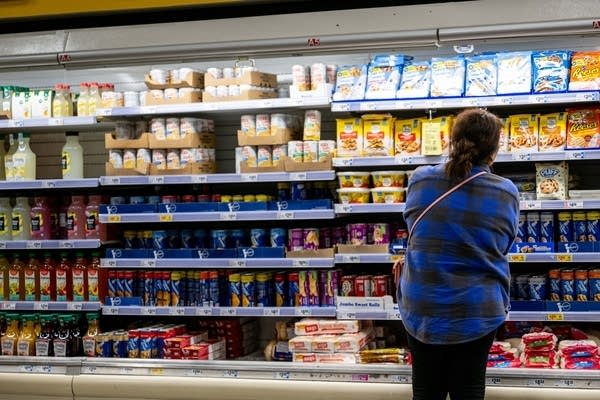What types of infrastructure spending have the best long-term economic results?
Roads, utilities and telecommunications provide some of the greatest economic returns.

This is just one of the stories from our “I’ve Always Wondered” series, where we tackle all of your questions about the world of business, no matter how big or small. Ever wondered if recycling is worth it? Or how store brands stack up against name brands? Check out more from the series here.
Listener Jesse Kuroki asks:
What types of infrastructure spending have the best long-term economic results?
Our economy can’t function without highways and planes.
Most experts would agree that we could bolster economic growth even further through better public transportation, said Justin Marlowe, a research professor at the University of Chicago’s Harris School of Public Policy.
There are three types of infrastructure investment that have the most-pronounced positive effects on economic development in the long run, Marlowe said.
That includes “core public capital” or “core infrastructure,” such as roads, airports and public utilities. Telecommunications infrastructure, such as broadband, especially in rural areas. And regional infrastructure, such as airports built by a county or regional government.
For every dollar that’s invested in core infrastructure, you typically receive a $3 to $8 return in economic growth over the next 20 to 30 years, Marlowe said.
“It’s literally the streets that are used to deliver goods and services. It’s the electricity infrastructure that powers factories,” Marlowe said.
For regional infrastructure and telecommunications infrastructure, it’s harder to pin a specific dollar amount to their economic return, because they haven’t been studied as extensively and selection bias may be at play, Marlowe said.
For example, with telecommunications infrastructure, there’s more likely to be an investment made in the areas that really need them. That means when infrastructure is set up, it’s more likely to have transformational benefits. So it can be hard to determine how much return you get on telecommunication investments in a typical community, Marlowe explained.
But in the areas where there are telecommunications projects, the return could be double or even triple the return you get on core infrastructure, Marlowe added. The effects are huge, because you’re connecting a community to the digital economy. While installing those systems is very expensive, they pay for themselves in the long run, Marlowe said.
Marketplace recently visited McKee, Kentucky, where high-speed internet has helped business owners run their companies and increased access to education and health care. Since 2014, every home and business has been connected to fiber internet as part of a project from the nonprofit Peoples Rural Telephone Cooperative. PRTC spent $50 million on the project, which included $45 million from the federal government and $5 million of its own money.
When it comes to regional structure, the economic benefits are going to be more concentrated in a specific area, which means you’re going to see a more measurable impact, Marlowe said.
You can also compare different forms of infrastructure within specific categories, like public transportation. Buses, for example, are cheaper than trains and subways because you’re using an existing road, said Zachary Liscow, a professor at Yale Law School and former chief economist at the White House’s Office of Management and Budget.
But there are many infrastructure projects where there’s a net negative economic impact, at least in the first couple of decades, because of how much it costs to build them. Transit projects are especially susceptible to this, because they take much longer to develop, Marlowe said.
You often have to find a place to build it instead of upgrading or retrofitting an existing system, get public feedback and pay union wages, Marlowe said.
“The way that you build infrastructure matters a lot and can have a substantial effect on that ultimate economic benefit,” Marlowe said.
Transit projects can also change the surrounding land values. Property values are often higher around transit lines, which means they come with higher property taxes, Marlowe said. Property taxes help fund schools, roads and libraries. But increasing values can displace workers. As people move away, that can decrease economic productivity, Marlowe said.
But it depends on the geographic region. “There are absolutely some transit systems that have really paid off,” Marlowe said.
For example, take New York City’s subway system. “When you invest in the subway, what you get is a more efficient, more effective way of moving people around, which is generally good for the economy,” Marlowe said.
If you wait long enough, infrastructure projects do eventually have a net positive economic impact, like Atlanta’s Metropolitan Atlanta Rapid Transit Authority system, Marlowe said. MARTA operates buses and trains, although it was initially founded as a bus system back in 1971.
“They had to move entire neighborhoods. It was competing directly with the construction of the highway system, which a lot of people didn’t appreciate, and it was generally seen as a very costly and disruptive boondoggle,” Marlowe said.
But in 1996, when Atlanta hosted the Olympics, the MARTA system helped transport millions of residents and visitors throughout the city. “Suddenly those investments in the transit system look like a stroke of genius,” Marlowe said.
In preparation for the Games, rail stations and cars were added to the MARTA system. The city became more transit friendly, which “unlocked all kinds of economic growth in parts of the city that had never seen it before,” Marlowe said.
Atlanta sees value in its transit system, which is why they’re trying to invest in it, Marlowe said. The city’s mayor, Andre Dickens, said earlier this year that he wants to build new MARTA rail stations.
Infrastructure throughout the U.S. is underfunded, according to the American Society of Civil Engineers. The organization, which releases report cards on the state of America’s infrastructure, gave the country a C- back in 2021.
If the U.S. continues to underinvest in infrastructure by 2039, that could cost the country $10 trillion in gross domestic product and more than 3 million lost jobs.
“When we fail to invest in our infrastructure, we pay the price. Poor roads and airports mean travel times increase. An aging electric grid and inadequate water distribution make utilities unreliable. Problems like these translate into higher costs for businesses to manufacture and distribute goods and provide services,” according to the report.













